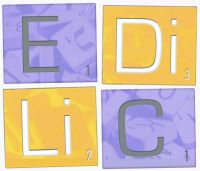Speakers
Description
This paper explores curriculum and policy dimensions of implementing bi/plurilingual literacy approaches in university curricula within a bilingual (English-French) university context in Canada (Beillard, 2009). After outlining a brief history of the policy framework that enacted a bilingual delivery model for a majority of university curricula, it then delves into the opportunities and challenges associated with embedding academic biliteracy (Berniz & Miller, 2017; Breuer, et al., 2021; Hornberger, 2022) and supporting pluralistic approaches across a range of programs through the creation of a university immersion stream.
Drawing on case study data, the paper illustrates how a university immersion approach (Knoerr & Weinberg, 2022) supports an inclusive, content-based language learning model (Brinton et al., 2003) towards bi/pluriliteracy development. Academic biliteracy is integrated into program curricula through a series of credit-bearing adjunct language courses (English or French Immersion courses) that are paired with content courses within a student’s degree program. These courses support the development of discipline-specific receptive and productive biliteracy skills amongst bi/multilingual adult learners, while also encouraging the use of their non-official home language. Strategies for the implementation of a bi/plurilingual literacy approach are discussed, outlining the significance of cross-linguistic pedagogy (Séror & Gentil, 2020; Ballinger et al., 2020), the use of digital tools, and coherent integration through a coordinated, collaborative and sequential approach by bringing together content and language faculty members to meet students’ needs in a timely and relevant manner.
The paper concludes with a discussion on lessons learned into the complexities of fostering pluralistic approaches in university-level courses and programs (Murray, 2022). Emphasis is placed on curriculum alignment, the role of leadership, policy, and resources in safeguarding an official minority language – French - while at the same time meeting the academic literacy needs of an increasingly multicultural, multilingual, and international student population within Canadian higher education.
References
- Ballinger, S., Man Chu Lau, S., & Quevillon Lacasse, C. (2020). Cross-linguistic pedagogy: Harnessing transfer in the classroom. Canadian Modern Language Review, 76(4), 265-277.
- Breuer, E., Lindgren, E., Stavans, A., & Van Steendam, E. (Eds.) (2021). Multilingual Literacy. Multilingual Matters
- Berniz, K., & Miller, A. (2017). English language support: A dialogical multi-literacies approach to teaching students from CALD backgrounds. Journal of Pedagogy, 8(2), 101-120.
- Brinton, D., Snow, M. A., & Wesche, M. B. (2003). Content-based second language instruction. University of Michigan Press.
- Hornberger, N. (2022). Researching and teaching (with) the continua of biliteracy. Educational Linguistics, 1(1), 108-133. https://doi.org/10.1515/eduling-2021-0004
- Knoerr, H., & Weinberg, A. (Eds.). (2022). Immersion at the university level: Rethinking language program implementations. University of Ottawa Press.
- Murray, N. (2022). A model to support the equitable development of academic literacy in institutions of higher education. Journal of Further and Higher Education, 46(8), 1054-1065.
Content/contenu/Inhalt 2
Cet article explore les dimensions curriculaires et politiques de la mise en œuvre de la littératie bi/plurilingue dans un contexte universitaire bilingue (anglais-français) au Canada (Beillard, 2009). Après avoir présenté un bref historique du cadre politique qui a adopté un modèle bilingue, l’article se penche ensuite sur les possibilités et les défis associés à l’intégration de la bi/multilittératie (Berniz & Miller, 2017 ; Breuer et coll., 2021 ; Hornberger, 2022) et la promotion des approches plurielles.
En s’appuyant sur les données des études de cas, l’article illustre comment l'immersion universitaire (Knoerr & Weinberg, 2022) soutient un modèle d’apprentissage des langues inclusif et basé sur le contenu (Brinton, et coll., 2003) afin de soutenir le développement de la bi/plurilittératie. La bilittératie académique est intégrée aux programmes d’études à travers une série de cours de langue crédités qui sont jumelés à des cours de contenu. Ces cours soutiennent les compétences réceptives et productives spécifiques à la discipline chez les apprenants adultes bi/multilingues, tout en encourageant l’utilisation de leur langue maternelle non officielle. Les stratégies de mise en œuvre d’une approche plurielle sont discutées, soulignant l’importance de la pédagogie interlinguistique (Séror & Gentil, 2020 ; Ballinger et coll., 2020), les outils numériques, et une approche coordonnée et séquentielle en réunissant les membres du corps professoral en contenu et en langue pour répondre aux besoins des étudiants.
L’article conclut par une discussion sur les complexités de la promotion des approches plurielles dans les programmes de niveau universitaire (Murray, 2022). L’accent est mis sur l’harmonisation curriculaire, le rôle du leadership, les politiques, et les ressources dans le but de sauvegarder une langue officielle en situation minoritaire – le français – tout en répondant aux besoins en littératie académique d’une population étudiante de plus en plus multiculturelle et multilingue au sein de l’enseignement supérieur canadien.
| Title/ titre/Titel 2 | L'intégration des approches bi-plurilittéraires dans une université canadienne bilingue: une étude de cas sur l'innovation curriculaire, la politique, et la pratique |
|---|

